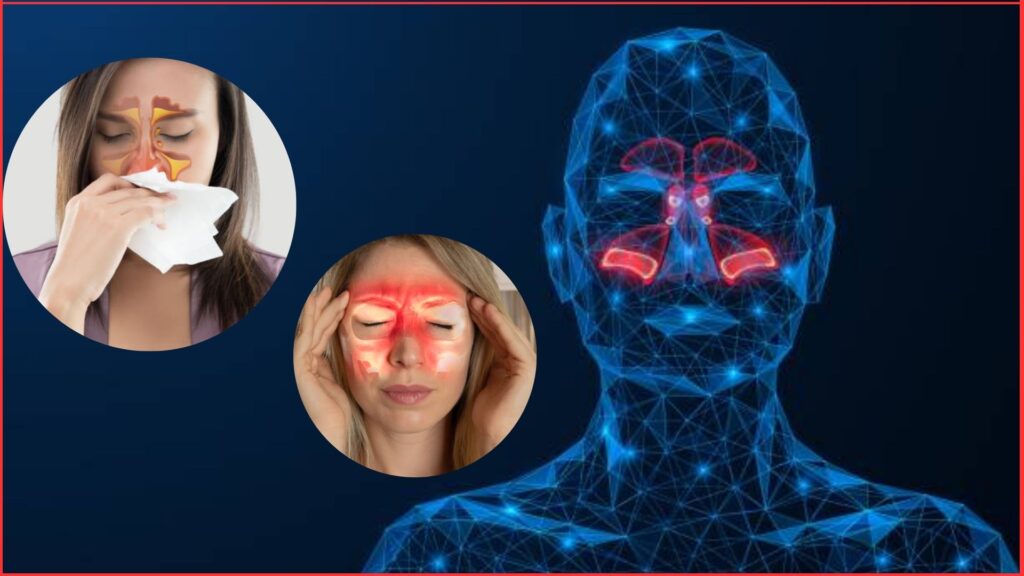Atrophic rhinitis : Causes, symptoms & treatment
Atrophic rhinitis
We have described in article :
Define & types of atrophic rhinitis
Symptoms of atrophic rhinitis
Causes of atrophic rhinitis
Investigations of atrophic rhinitis
Treatment of atrophic rhinitis
Pathology of atrophic rhinitis

Definition of atrophic rhinitis :
Definition : Atrophic rhinitis is a chronic inflammation of nose characterized by atrophy of nasal mucosa and turbine bones.
Types of atrophic rhinitis :
- Primary atrophic rhinitis (ozaena)
- Secondary atrophic rhinitis.
Symptoms of atrophic rhinitis :
- Foul smell from the nose.
- Anosmia (merciful anosmia).
- Nasal obstruction.
- Epistaxis.
- Headache.
- Discharge of greenish crust.
- Dryness in the throat & nose.
- Hearing impairment.
Signs of atrophic rhinits :
- Nasal cavity to be full of greenish or greyish black dry crusts covering the turbinates and septum.
- Attempts to remove them may cause bleeding.
- When the crusts have been removed, nasal cavities appear roomy with atrophy of turbinates so much so that the posterior wall of nasopharynx can be easily seen.
- Nasal turbinates may be reduced to mere ridges.
- Nasal mucosa appears pale.
- Septal perforation and dermatitis of nasal vestibule may be present.
- Nose may show a saddle deformity.
Investigations of atrophic rhinitis :
- X-ray PNS anterior view shows hazy sinus (sinusitis).
- Pus for culture and sensitivity.
- Blood for- ✓TC, DC, ESR. ✓ Serum protein, Serum iron
- Serology for VDRL.
- Blood biochemistry for estrogen & progesterone.
Treatment of atrophic rhinitis :
Medical treatment :
- Explanation & reassurance.
- Nasal irrigation and removal of crusts: By warm normal saline or an alkaline solution to remove (Higginson’s syringe) the crusts.
- 25% glucose in glycerine: To prevent formation of crusts.
- Local antibiotics
- Oestradiol spray.
- Injection placental extracts (Locally)-If endocrine causes occurs.
- Systemic use of streptomycin.
- Potassium iodide.
Surgical treatment for atrophic rhinitis : Modified Young’s operation (Partial closure of Anterior Nares for 1 to few years) which helps Regeneration of epithelium and crusting relieves.
Prognosis : Though the disease may not be cured, but it can be kept under control by regular douching. Modern surgical procedures offer better chances of reversibility of mucosa and disease.
Causes of atrophic rhinitis :
Primary atrophic rhinitis : Remember Hernia
1). Hereditary factors : Disease is known to involve more than one member in the same family.
2) Endocrinal disturbance : Disease usually starts at puberty, involves females more than males, the crusting and foetor associated with disease tends to cease after menopause; these factors have raised the possibility of disease being an endocrinal disorder.
3) Racial factors : White and yellow races are more susceptible than natives of equatorial Africa.
4) Nutritional deficiency : Disease may be due to deficiency of vitamin A, D or iron or some other dietary factors.
5) Infective :
- Klebsiella ozaenae
- Diphtheroids.
- Proteus vulgaris
- Escherichia coli
- Staphylococci
- Streptococci
6) Autoimmune process : The body reacts by a destructive process to the antigens released from the nasal mucosa. Viral infection or some other unspecified agents may trigger antigenicity of nasal mucosa.
Secondary atrophic rhinitis :
- Syphilis
- Lupus vulgaris
- Leprosy
- Rhinosclelerna.
- Long-standing purulent sinusitis.
- Radiotherapy to nose.
Pathology of primary atrophic rhinitis :
- Degeneration of ciliated epithelium and seromucionus gland.
- Formation of thick adherent crusts in the nose.
- Secondary infections by saprophytes.
- Turbinates are atrophied-airway widens.
- Sinuses may be small due to arrested pneumatization.
- Spontaneous recovery- Later life in some cases.
- Neuroepithelium (olfactory epithelium) also be atrophied.
Drugs contraindicated in atrophic rhinitis :
- Antihistamine.
- Nasal decongestant.
Reasons : In atrophic rhinitis there is dryness of the nose & throat. Antihistamine & nasal decongestant cause more dryness. This is why these drugs are contraindicated in atrophic rhinitis.

Hello.This article was extremely fascinating, especially since I was browsing for thoughts on this matter last Tuesday.